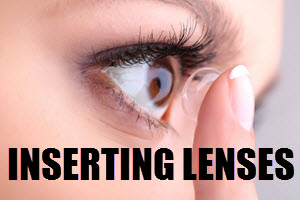The Role of Decorative Lenses in Anime-Inspired Looks
Anime culture has significantly influenced global popular culture, extending its reach into fashion, makeup, and notably, eye aesthetics. Among the key elements for creating anime-inspired appearances are decorative lenses, also known as circle lenses or cosmetic contact lenses. These lenses play a crucial role in mimicking the distinct visual style that anime is known for.
What Are Decorative Lenses?
Decorative lenses differ from regular contact lenses in their primary purpose, which is cosmetic enhancement rather than vision correction. Designed to augment or modify the eye’s appearance, decorative lenses are available in myriad colors, patterns, and effects. This diversity allows individuals to achieve the exaggerated look of anime characters, marked by oversized and expressive eyes.
History and Origin
The inception of decorative lenses can be traced to Japan and South Korea during the late 20th century. These regions witnessed a rising trend of modifying eye aesthetics to align with the popular visuals found in anime and manga. As this trend grew, decorative lenses gained international popularity, establishing themselves as a vital accessory for anime fans and cosplayers worldwide.
Features of Decorative Lenses
Decorative lenses come with specific features that facilitate transformations into anime-inspired looks:
Enlargement Effect: A hallmark of decorative lenses is their ability to cover more of the sclera (the white of the eye) than standard lenses. This feature creates the illusion of larger eyes, a characteristic feature of anime characters renowned for their huge, expressive eyes.
Variety in Design: These lenses offer an array of designs, ranging from vibrant colors to intricate patterns, including spirals and starbursts. Such designs help replicate the fantastical eye styles seen in anime series, contributing to a more authentic portrayal.
Enhancement vs. Transformation: Decorative lenses cater to a broad spectrum of needs. Some provide minimal changes for a subtle enhancement, whereas others facilitate dramatic transformations, ideal for those engaging in cosplay or aiming to represent specific characters accurately.
Popularity Among Cosplayers and Enthusiasts
Cosplayers, who are individuals embodying characters from anime, manga, or other media, often rely on decorative lenses to enhance their portrayal accuracy. These lenses enable cosplayers to better mimic the character’s eye features, contributing to an overall convincing appearance. Aside from cosplay, decorative lenses are embraced by fashion aficionados eager to experiment with personal styles. By altering eye color and apparent size, these lenses allow the wearer to achieve a preferred aesthetic rapidly and effectively.
Considerations and Safety
Though decorative lenses offer potent tools for attaining anime-inspired aesthetics, certain safety precautions are imperative:
Proper Fit: Ensuring that lenses fit perfectly is crucial, as an ill-fitting lens can cause discomfort and may result in irritation to the eyes.
Prescription Requirement: In numerous regions, individuals need a prescription from an eye care professional to purchase decorative lenses, including non-corrective ones. This requirement helps ensure that the lenses provide a suitable match for the user’s eyes without compromising safety.
Hygiene Standards: Proper hygiene practices are essential when wearing decorative lenses. Regular cleaning and adhering to recommended wear times are necessary to prevent infections and other potential complications. Users need to follow all instructions related to lens care diligently.
Conclusion
Decorative lenses provide a magnificent gateway for individuals aiming to modify their appearance dramatically, resonating with the bright and animated style of their favorite anime characters. While enhancing the aesthetic appeal of such lenses, users must never overlook the importance of maintaining eye health and safety. Adhering to correct practices and consultation with eye care professionals ensures that the adventure into anime-inspired aesthetics remains both safe and satisfying. For further information on safe practices and various lens options, consider online resources from reputable eye care providers as invaluable guides.



 Cosmetic contact lenses
Cosmetic contact lenses